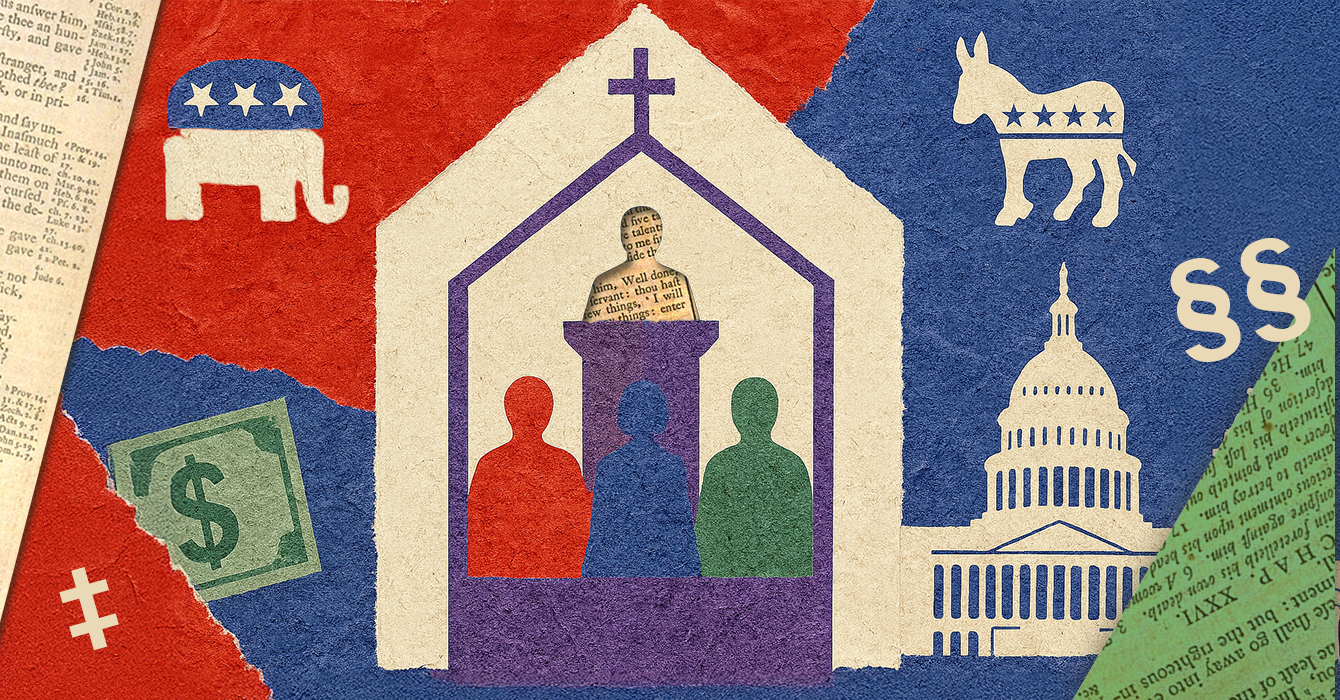As I saw the rioters enter the Capitol on January 6, many of them carrying “Jesus 2020” flags and wearing “Faith, Family, Freedom” shirts, I began to worry and wonder. Over the next few days and weeks, it would become clear that busloads of White evangelicals were indeed among the rioters, having traveled to Washington, DC, with neighbors and friends from church. Would I have been there if I had not left the movement? Or if I hadn’t gone myself, would I have been watching the images in tacit support, perhaps praying for the “patriots” willing to do God’s will even when it’s not easy?
A few days after the J6 insurrection, friends from my old church informed me that dozens of people from churches in our home region had been there and that there were even more back home who approved of the rioters’ actions. What seemed like a fringe movement of violent Trump supporters was populated by the small business owners, accountants, and lawyers from the affluent suburbs surrounding my old church. With a wave of nausea, I admitted to myself that had history unfolded in a different pattern, I could have been one of them.
On one hand, I told myself, you would have known better. After all, over time you have transformed from a youthful zealot to a heady professor. Your brain would have never let your body get on a plane to DC. You would have seen the folly in such a move, right? Right?
On the other hand, my headiness is exactly what had made me so extreme. After working through the logical components of evangelical teachings — like the idea that Jesus could return at any moment — as a teenager I had committed myself to living them out in the most stringent and pure ways, even if it meant social awkwardness and disapproval from my family. I had clearly been a zealot, and I couldn’t know now how far that zealotry would have taken me.
I felt like I was occupying two perspectives on the whole spectacle. As a former insider, my body came alive with the memories of the righteous indignation that fueled my anger about issues like abortion and the “attacks” on Christianity by the US government. I remembered trusting pastors and elders whose faith inspired me to forgo critical thought for radical obedience. If that meant saving my country from ruin by “stopping the steal,” I imagine that saying a prayer and jumping into the fray like the patriots of 1776 would have made sense to me. In ways that startled me, it wasn’t hard to think myself into the rioters’ shoes.
Yet as a scholar who has been analyzing White Christian nationalism for years, I realized that the Capitol insurrection was the logical outcome of a half century of patriotic Christians preparing for combat. It was set in motion by the New Right — a conservative political movement, birthed in the 1960s, ready to use any means necessary to stop the cultural revolutions and return the country to the hands of White, landowning men. In the 1970s, the Religious Right — an explicitly political coalition of evangelicals and Catholics set on restoring old-time religion and family values — joined forces with the New Right. Together they form the New Religious Right. In the half century since they linked up, their Christian nationalist mission has been to take America back for God and the people they deem worthy of holding power in his name.
In many ways, it was the White Christian nationalism of the New Religious Right to which I converted back in eighth grade. Thus, for me, January 6 was the physical manifestation of the culture war in which I had been a soldier for eleven years — one that pitted God’s patriots on one side against godless traitors on the other. For more than a decade, I had learned the war’s topography. Front and center was the fight to take the country back for God. Christians needed to rise up, enter positions of leadership and influence, and ensure the nation didn’t fall into the hands of godless socialists and radical leftists — even if ascending the political hierarchy and maintaining power required antidemocratic strategies.
On one flank was a separate but related battle against “government schools,” waged through unregulated homeschool curricula and private academies. On the other was the struggle to maintain the “traditional family” against the “gay agenda” and the women’s rights movement. This clash merged with the militant proborn movement, standing up to the “holocaust” of abortion. Soldiers in this war were trained in a particular model of masculinity. As a teenager, I was taught by the male elders in my life that the best examples of Christian manhood came from Mel Gibson movies like Braveheart and The Patriot, in which a courageous hero refuses to allow the government to take his people’s way of life and successfully ignites a revolution.
What I knew instinctively on January 6 was that Christian nationalists’ war on our democracy didn’t start after the November 2020 election. It didn’t even start with Trump. It has been raging for over half a century. Trump’s Big Lie simply provided the impetus to take it from the political and cultural levels to an actual attempted coup.
As I began to catalog artifacts from that day, scrolling for hours through #capitolsiegereligion (started by Smithsonian curator Peter Manseau), two things became evident. First, religious symbols were everywhere — rioters carrying crosses and icons of Mary, tough guys wearing Bible verses stitched onto chest patches declaring war on God’s enemies, people breaking out in impromptu worship songs, the Proud Boys kneeling and praying together in a circle before violently overtaking law enforcement to enter the Capitol. Second, White Christian nationalism was a major unifying phenomenon among the insurrectionists.
It became clear that, if we were ever going to understand what seemed like an unthinkable set of events, we were going to need to reckon with how White Christian nationalism helped birth MAGA Nation.
Reprinted with permission from “Preparing for War: The Extremist History of White Christian Nationalism — And What Comes Next,” by Bradley Onishi, copyright © 2023 Broadleaf Books.









